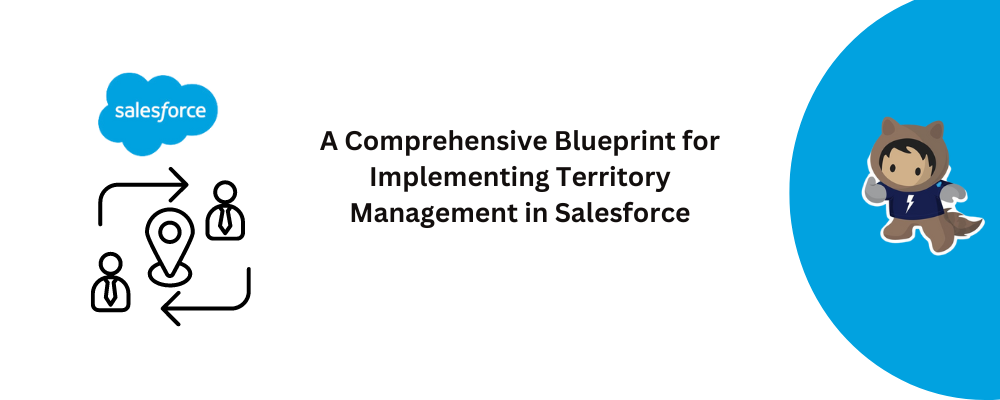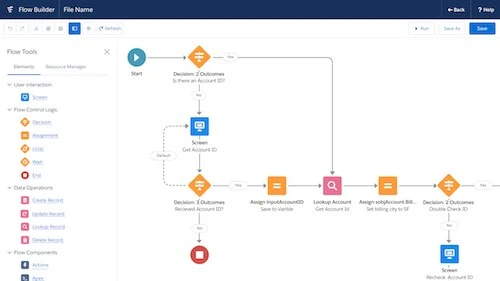Enacting Territory Management in Salesforce can profoundly elevate your sales apparatus, ensuring judicious allocation of resources and superior sales outcomes. Adhere to this meticulously crafted guide to establish and manage territories with finesse.
Step 1: Elucidate Your Aspirations
Before embarking on the configuration, delineate your desired outcomes with Territory Management. Prevailing aspirations encompass:
- Augmenting market penetration
- Enhancing customer service quality
- Equilibrating the workload among sales personnel
Having lucid objectives will steer your setup process, ensuring it is congruent with your business aspirations.
Step 2: Involve Key Stakeholders
Engage pivotal stakeholders, such as sales managers, representatives, and pertinent team members, in the strategizing phase. Their insights and endorsement are vital for successful enactment.
Step 3: Activate Enterprise Territory Management
- Navigate to Setup: In Salesforce, access Setup by clicking the gear icon.
- Search for Territory Settings: In the Quick Find box, input “Territory Settings.”
- Enable Enterprise Territory Management: Click on “Enable Enterprise Territory Management” to activate the feature.
Step 4: Define Territory Types and Models
Create Territory Types
- Navigate to Setup and search for “Territory Types.”
- Click “New Territory Type” and define types based on your criteria (e.g., geographic, product-based).
Create Territory Models
- In Setup, search for “Territory Models.”
- Click “New Territory Model” and assign it a name and description.
- Incorporate territories into this model and define their hierarchy.
Step 5: Establish Territory Hierarchy
Create Territories
- Navigate to your newly established Territory Model.
- Click “Create Territory” to commence adding territories.
- Specify each territory’s name, type, and parent territory (if applicable).
Organize Territories
- Structure territories into a hierarchy that mirrors your business architecture.
- Utilize drag-and-drop to rearrange territories as required.
Step 6: Define Rules-Based Assignment
Set Assignment Rules
- Within your Territory Model, click “Assignment Rules.”
- Define rules based on criteria such as geography, industry, or account size.
Test Rules
- Execute the rules to observe how accounts are allocated.
- Modify the rules as necessary to ensure precise assignments.
Step 7: Allocate Accounts to Territories
Run Assignment Process
- Once rules are established, execute the assignment process to distribute accounts to territories.
- Verify that accounts are allocated accurately based on your rules.
Manually Adjust Assignments
- If required, manually fine-tune account assignments to optimize territory distribution.
Step 8: Monitor and Scrutinize Performance
Utilize Salesforce Reports
- Navigate to the Reports tab and generate reports to oversee territory performance.
- Track pivotal metrics such as sales volume, account activity, and territory revenue.
Analyze Data
- Leverage insights from your reports to discern trends and areas for enhancement.
- Adjust territories and rules based on your analysis to optimize performance.
Step 9: Communicate and Educate
Communicate Changes
- Inform your sales team about the revamped territory structure and its benefits.
- Ensure clear communication so everyone comprehends their new responsibilities.
Provide Training
- Conduct training sessions to acquaint your team with the new Territory Management setup.
- Offer ongoing support to address any queries or issues that emerge.
Step 10: Perpetual Improvement
Regularly Review Territories
- Periodically reassess your territories and their performance.
- Make adjustments as necessary to adapt to market changes or strategic shifts.
Gather Feedback
- Collect feedback from your sales team regarding the territory setup.
- Use this feedback to implement continuous improvements, maintaining the system’s efficacy.
By adhering to these steps, you can proficiently implement Territory Management in Salesforce, culminating in superior resource allocation, enhanced sales performance, and fortified customer relationships. Remember, Territory Management is an iterative process that necessitates regular reviews and adjustments to remain attuned to your business objectives.
How to Build a Blood Pressure Tracker with Salesforce Flow and Custom Notifications




